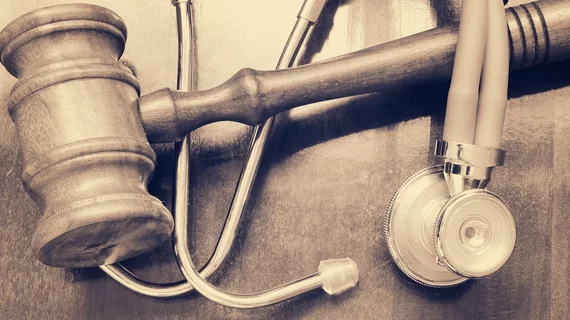Radiologists are involved in 15 percent of diagnosis-related malpractice claims, with 80 percent of those cases resulting in permanent injury or death, according to a debut report from medical liability insurer Coverys.
In the first of a series of upcoming reports, Covery’s Red Signal Report analyzed 10,000 company claims closed between 2013 and 2017. Some 595 radiologists were cited in these claims, according to the report.
Findings revealed that radiologists were second only to general medicine practitioners in diagnosis-related malpractice claims. Of their total claims, 80 percent were “alleged” to have been related to misinterpretation of clinical tests, according to the report’s author Robert Hanscom, vice president of business analytics for Coverys.
Cancer diagnoses accounted for the most frequent claims, with the top four cancer conditions being: breast, lung, pancreatic and ovarian cancer.
“Claims alleging errors in radiology practices are common in medical professional liability claims,” Hanscom wrote. “Such errors can have a profound effect on the patients impacted from the delay or incorrect management of a clinical diagnosis.”
In fact, “many” of the claims allege a lack of follow-up on abnormal results lead to a high-severity patient injury which the report defined as death, permanent grave or permanent significant injury, he wrote.
As providers are asked to adhere to an increasing number of metrics, such as the Medicare Access and CHIP Reauthorization Act (MACRA), it’s Merit-based Incentive Payment System (MIPS) and advanced alternative payment models (AAPMs), authors created the report to assist healthcare organizations in identifying issues relating to risk management, patient safety and quality outcomes.
In light of the findings, Hanscom wrote that “radiologists play an ongoing and critical role in the delivery of an accurate patient diagnosis, and it is paramount that they are actively integrated into the diagnostic team.” However, this is not always the case.
The report offered guidance on reducing risk in the specialty. Below are a few of those recommendations:
- Decision support tools and standard treatment protocols can manage workflow and patient requirements.
- Create criteria for radiologists to decide if an image requires a second read.
- Utilize report templates that include specific criteria such as problems suspected and probable diagnosis.
It also put forward quality measure-specific recommendations. Below are three of those suggestions:
- Use notes in the patient electronic health record (EHR).
- Adopt various institutional EHR applications.
- Implement order tracking within the EHR for managing and routing test results.
“In the long run, putting into place best practices will help improve patient outcomes while helping radiologists on two additional key fronts: reducing malpractice exposure and maximizing revenue through implementation of key quality measures that align with MACRA, MIPS, and AAPM payment model metrics which will positively impact reimbursements,” the report concluded.

